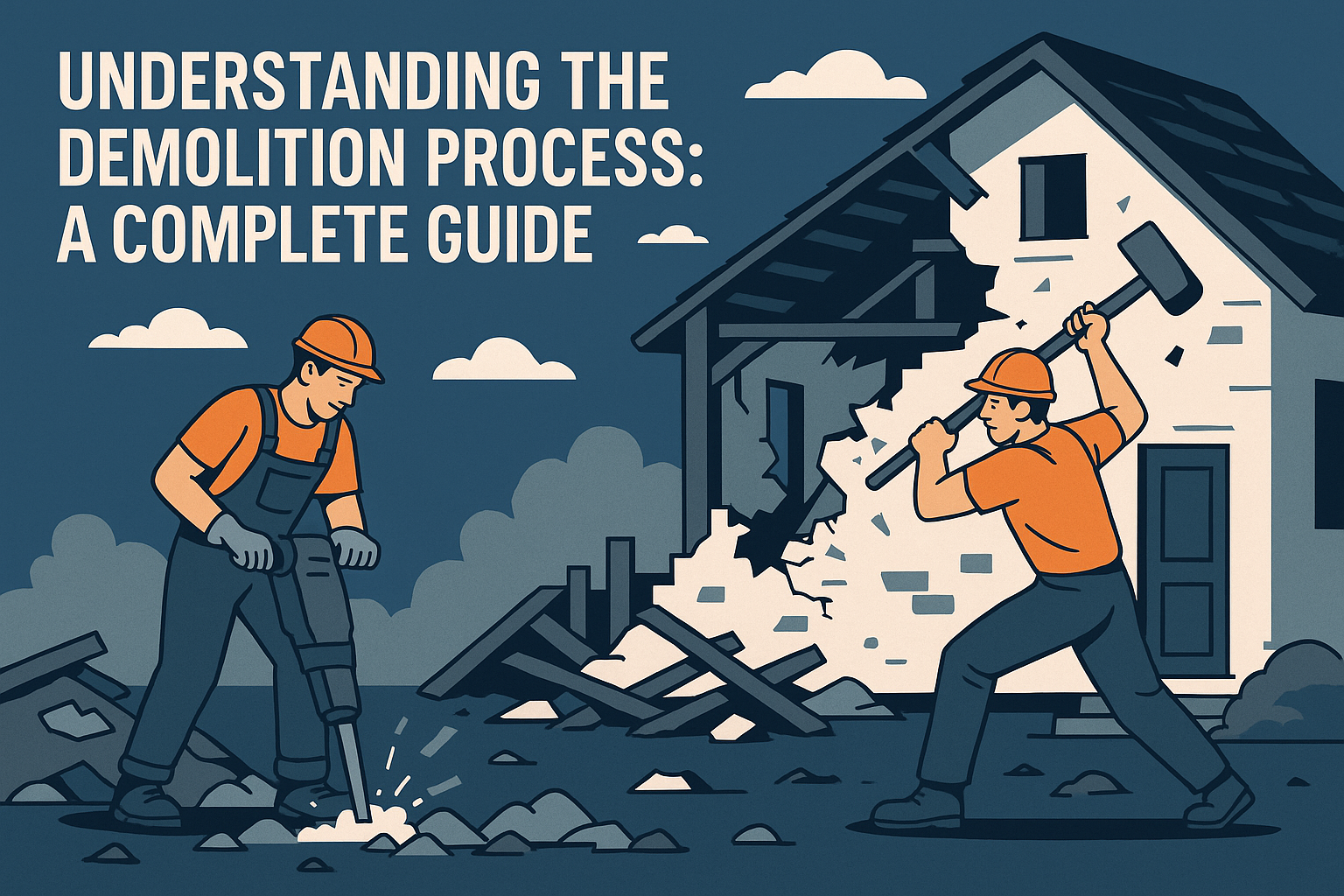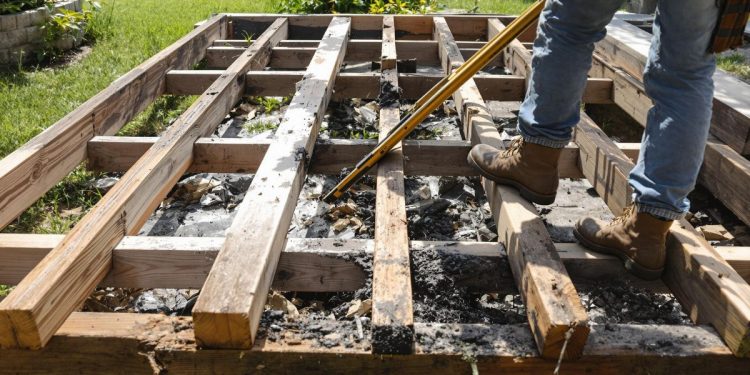Imagine staring at a hideous 1970s kitchen with peeling linoleum or a sagging deck that's one creak away from collapse. You don't need a wrecking ball or a Hollywood-sized demo crew. You need a nimble team that can swoop in, tear out the old, and leave your space ready for its glow-up. Small-scale demolition, like gutting interiors, ripping up floors, dismantling decks, or knocking down walls, is equal parts art and science. It's not about mindless destruction. It's about precision, planning, and keeping the neighbors from staging a revolt. Here's how to nail your mini-demo project with style, sass, and a whole lot of know-how.
1. Planning and Assessment: Think Before You Smash
Before you grab a sledgehammer and go full Hulk mode, you need a plan. Small projects like tearing out a bathroom or demolishing a deck still require brainpower to avoid turning your home into a disaster zone. Here's what goes into a solid game plan:
- Structural Check: Not every wall is just drywall and bad decisions. Some are load-bearing or hiding electrical wires. A pro will scope it out to ensure you're not accidentally starring in a DIY horror story.
- Hazard Hunt: Old houses love to hide surprises like asbestos in the ceiling or lead paint flaking like last week's manicure. Testing for these is a must to keep your project safe and legal.
- Utility Prep: Ripping out a kitchen? Shut off the water, gas, and power first. One wrong move, and you're dealing with a flooded floor or a spark show nobody asked for.
- Neighbor Vibes: Your demo might sound like a rock concert to the folks next door. Plan for noise, dust, and where your crew's truck will park to avoid a neighborhood showdown.
- Eco Smarts: Even small jobs create rubble. Sorting debris for recycling saves cash and keeps the local landfill from sending you hate mail.
"Proper planning prevents poor performance." Skip this step, and you're begging for a homeowner meltdown or a hefty repair bill. Take the time to plan, and you'll look like the genius who made it all seem effortless.
2. Permits: Navigating the Paperwork Maze
Think you can just start smashing that outdated bathroom? Not so fast. Your local government loves to remind you who's boss with a pile of permits, even for small demos. Here's what you might need:
- Demolition Permit: Most towns want a permit for anything structural, like a wall or deck. It's their way of ensuring you're not turning your yard into a post-apocalyptic movie set.
- Environmental Clearance: Old materials like asbestos require special handling. You might need extra paperwork to prove you're not dumping toxins in the local creek.
- Utility Sign-Off: Some cities demand proof that you've cut the power or water before you swing a hammer. It's less about safety and more about their need to micromanage.
- Parking or Dumpster Permits: If your crew's truck or a dumpster blocks the street, you might need a permit for that too. Because nothing says "freedom" like asking permission to park.
Permit rules vary by town, so check with your local building department. Better yet, hire a contractor who knows the paperwork game and can sweet-talk the city clerk while you sip coffee and dream of your new open-concept living room.
3. Safety First: Keep the Chaos in Check
Small demos might not involve skyscraper implosions, but they're still no place for a "whatever, I'll be fine" attitude. Safety is everything when you're swinging tools in someone's home. Here's how to keep everyone safe and sound:
- Set Up a Safety Zone: Block off the work area with tarps, cones, or caution tape. It stops kids, pets, and curious neighbors from wandering into the danger zone.
- Clear Signage: Post "Danger: Demo in Progress" or "Hard Hat Area" signs. They're legally required and might keep someone from tripping over a stray nail.
- Gear Up: Your crew needs hard hats, safety goggles, gloves, and sturdy boots. Dust masks are a must for old floors or walls, unless you want to hack up a lung by lunch.
- Emergency Plan: Keep a first-aid kit, fire extinguisher, and a plan for handling mishaps. Bonus points for knowing the quickest route to the nearest urgent care.
Safety isn't sexy, but it's the difference between a smooth job and a viral clip on X titled "Demolition Disasters." Don't cut corners here.
4. The Demolition Dance: Time to Break Stuff
This is the fun part, where the old gets obliterated to make way for the new. But even small demos like gutting a kitchen or tearing down a deck need finesse, not just brute force. Here's how it goes down:
- Utility Double-Check: Confirm the water, gas, and power are off before you touch a thing. Nothing kills the vibe faster than a geyser or an impromptu light show.
- Interior Gutting: For kitchens, bathrooms, or walls, start by removing fixtures, cabinets, or drywall. Pros use crowbars, sledgehammers, and a dash of patience to avoid damaging what stays.
- Deck or Floor Removal: Decks come apart board by board, while floors might need a pry bar for hardwood or a jackhammer for tile. Expect sweat, dust, and maybe a few choice words.
- Debris Sorting: That pile of broken drywall, splintered wood, and rusty nails needs sorting. Recycle metal, wood, or tiles to save money and keep the eco-warriors happy.
- Cleanup Crew: Once the smashing's done, sweep, vacuum, and haul away every speck of dust. A clean site is your ticket to a homeowner's heart (and a glowing review).
Small jobs can wrap in a day or two, but they're loud, messy, and weirdly satisfying. It's like stress relief with a side of power tools.
5. After the Dust Settles: Wrapping It Up
You've gutted the bathroom, smashed the deck, or knocked down that wall. Time to pop the champagne? Not quite. Here's how to finish strong:
- Final Inspection: Some towns send an inspector to ensure you didn't leave behind a hazard or a hole in the floor. Pass this, and you're in the clear.
- Debris Disposal: Haul rubble to the dump or a recycling center. Hazardous materials like asbestos need special handling, so don't just toss them in the neighbor's bin.
- Site Prep: Level the ground where the deck stood or clean the subfloor for new tile. A tidy site sets the stage for the next phase of the project.
- Client Walkthrough: Show the homeowner your handiwork. A clean, well-done job is your best shot at five stars and a referral.
Skimp on these steps, and you're asking for trouble. Nail them, and you're the demo hero every homeowner raves about.
6. Picking the Right Demo Crew: Don't Settle for Sketchy
Your small demo deserves a contractor who's quick, clean, and doesn't charge like they're leveling a mansion. Here's how to find the real deal:
- Licensed and Insured: No license or insurance? No dice. You don't want to be liable if they drop a hammer through your hardwood.
- Small-Project Experts: Choose a crew that lives for residential jobs like kitchens, decks, and walls. They'll work fast without turning your living room into a war zone.
- Solid Reviews: Check X, Google, or Nextdoor for feedback. If their last client said, "They left my yard like a landfill," keep looking.
- Upfront Pricing: A good contractor provides a clear quote with no "we'll figure it out later" nonsense. Transparency saves headaches.
- Safety and Cleanup Obsessed: They should arrive with hard hats, tarps, and a vacuum, ready to leave your place cleaner than they found it.
Don't fall for the guy with a rusty crowbar and a "trust me" grin. Go with pros who treat your home with respect (while still smashing what you want gone).
Small Demos, Big Impact
Tearing out a kitchen, ripping up a floor, or demolishing a deck might not make headlines, but these small-scale projects are the backbone of epic home makeovers. Done right, they're fast, clean, and pave the way for that dream renovation or backyard paradise. Done wrong, they're a dusty, expensive mess. Whether you're a homeowner craving a fresh start or an investor flipping a fixer-upper, pick a demo crew that knows the game. Grab your safety goggles, fire up the tools, and let's turn that outdated space into a pile of possibilities.



